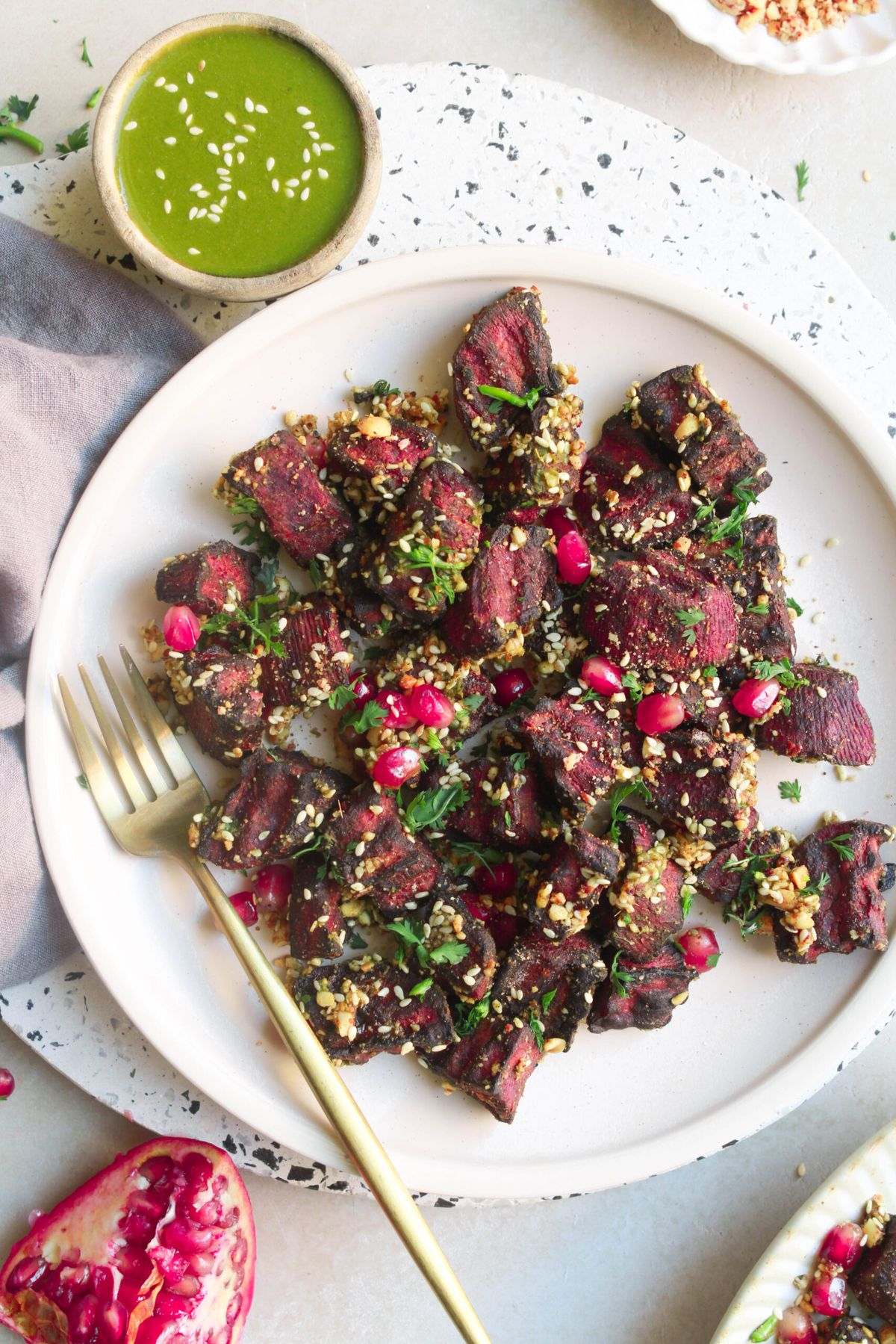As you walk through the narrow lanes of a small town in Uttar Pradesh during Navratri, there’s a certain sacred calm in the air — the temples hum with bhajans, incense smoke curls into the sky, and somewhere nearby, a street vendor begins to prepare a chaat that feels more like an offering than a mere snack: Shakarkandi Chaat.
🍠 The Star Ingredient: Shakarkandi (Sweet Potato)
Sweet potato, or shakarkandi, is nature’s gift during fasting. Its naturally earthy sweetness deepens as it roasts over smoldering coals — the skin chars, the insides caramelize, and the humble root transforms into something magical.
If you close your eyes, you can smell it — a toasty, slightly smoky aroma mingled with that unmistakable sweetness that promises warmth and comfort. It’s the kind of smell that makes you forget you’re fasting.
🔪 Preparation – A Symphony of Simplicity
- Boiled or Roasted Sweet Potatoes
- Peeled and cubed while still warm. The texture? Soft and buttery, almost melting in your mouth.
- Lemon Juice
- A generous squeeze brings brightness — like the first sunlight after an early morning aarti. It cuts the sweetness, adds zing, and wakes up the palate.
- Sendha Namak (Rock Salt)
- The saltiness is gentle, restrained. Just enough to season, not overwhelm.
- Roasted Cumin Powder
- This is the aroma that hits you next. Smoky, warm, and earthy — it evokes the scent of dry fields after the first rain.
- Black Pepper / Green Chilies (Optional for some)
- A bit of heat to keep it lively — a reminder that even in simplicity, there is complexity.
- Chopped Coriander
- Fresh and green, almost grassy — it adds color and life, like leaves fluttering in a temple courtyard.

🥣 Serving – The Moment of Devotion
Served in a leaf bowl (dona) if you’re lucky, the kind used by street vendors and temple kitchens alike. The sweet potatoes glisten with lemon and spice, steam gently rising.
As you take a bite, you’re not just eating — you’re experiencing:
- Sweetness of shakarkandi, grounding you.
- Tang of lemon, lifting your senses.
- Whispers of cumin, anchoring you to tradition.
- A slight burn of chili, awakening your spirit.
Each bite is soft, warm, and a little messy — the kind of dish you eat slowly, reverently. The kind that reminds you that food, especially during Navratri, is not just nourishment, but prasad — sacred, mindful, full of intention.

💭 Why It Matters
In the heart of Uttar Pradesh, during these nine sacred days, shakarkandi chaat is more than food. It’s:
- A comfort dish when you’re abstaining from heavier meals.
- A bridge between tradition and taste, simplicity and satisfaction.
- A nostalgic echo of childhood Navratris spent barefoot in temple courtyards, with sticky fingers and a heart full of devotion.



No responses yet